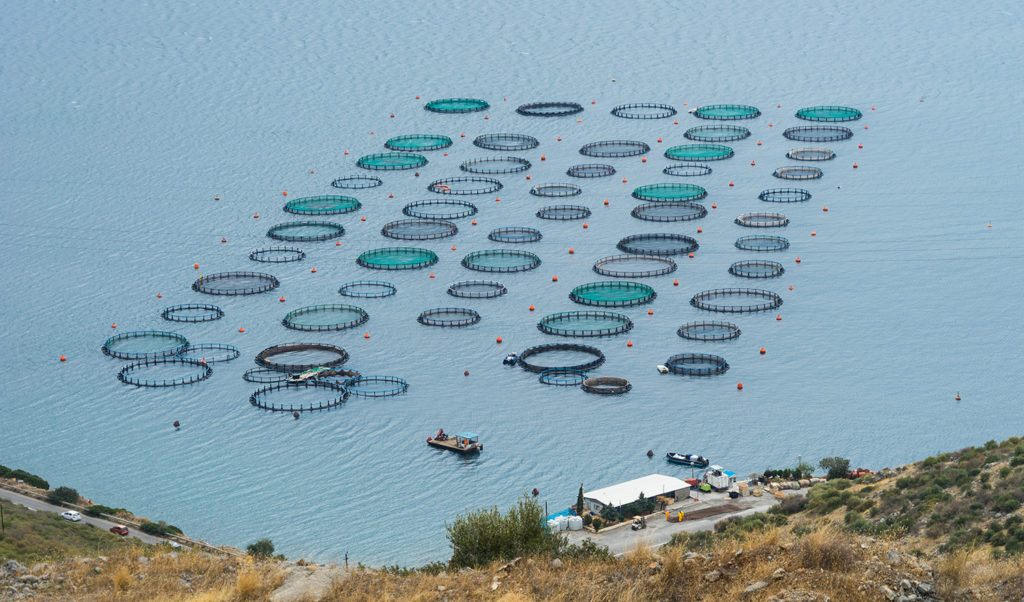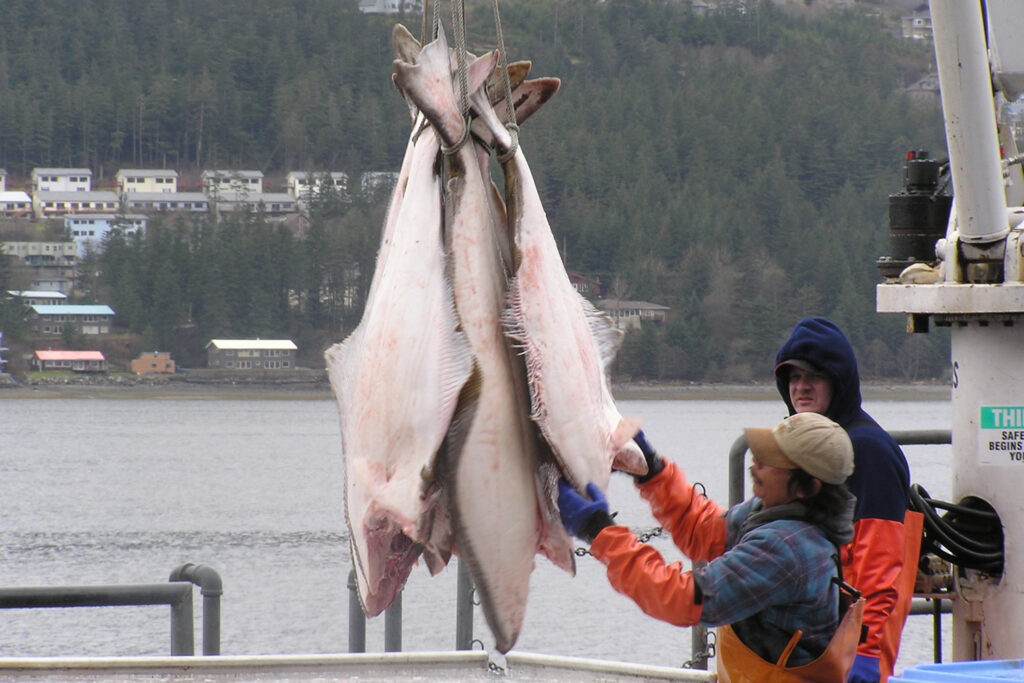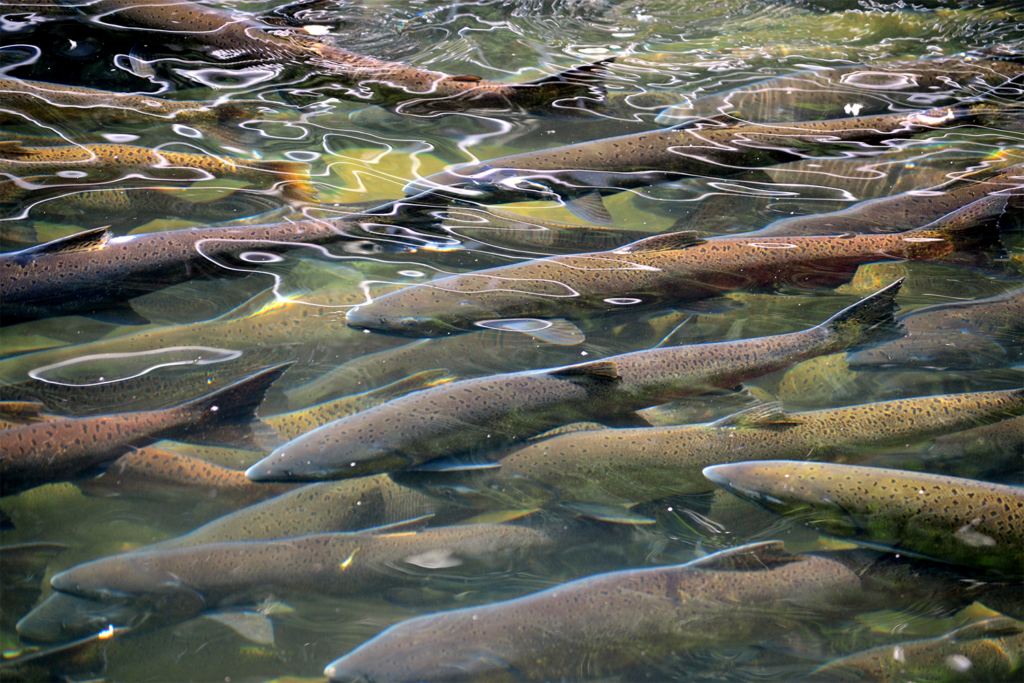Study aims to provide vital data for sustainable fisheries and marine conservation

A new University of New Hampshire (UNH) study has uncovered insights into the migratory patterns of marine species, revealing how underwater receivers can track the long-distance movements of fish and invertebrates.
The research, published in the Journal of Fish Biology, demonstrates how acoustic telemetry networks – using transmitters attached to the animals – capture signals that connect ecosystems from New England’s cold waters to Florida’s tropical bays. This breakthrough enhances the understanding of migratory behaviors, as well as deepens knowledge of the complex relationships between distant marine environments that support New England’s vital fisheries.
“This study allowed us to see how species use both estuarine and coastal habitats near and far,” said Mariah Livernois, lead author and a former UNH postdoctoral researcher now based at the University of South Carolina. “By working with collaborative telemetry networks, we can track species over large areas, providing critical data on their seasonal movements and habitat use.”
The study tracked the movements of 288 tagged individuals from eight species of fish and invertebrates, including striped bass, blue catfish, cownose rays, smooth dogfish, alewife, horseshoe crabs, common carp and dusky sharks. Findings revealed striking migratory patterns across species: coastal species like cownose rays and striped bass demonstrated seasonal migrations that sometimes covered thousands of miles.
Many of these species rely on Chesapeake Bay as a critical hub for reproduction and juvenile development before heading to either northern or southern regions. The data highlights the interconnectedness of waterbodies along the Atlantic seaboard, with these species frequently traveling between diverse ecosystems throughout the year.
For New England’s fishing and conservation communities, understanding these migration patterns is key to identifying crucial habitats and timing species movements. This data helps guide sustainable management practices, crucial as climate change reshapes marine environments and migratory routes shift.
Could fish aggregation at ocean aquaculture structures expand wild populations and local fisheries?
“These animals don’t recognize borders, so our management strategies must reflect the scale of their movements,” Furey said. “By understanding when and where these species travel, we can coordinate efforts to conserve their habitats and manage fisheries sustainably.”
The acoustic telemetry network, covering the U.S. Atlantic coast, allowed researchers to track aquatic animal movements across more than 20 degrees of latitude, from Florida to New Brunswick, Canada. While this technology offers valuable insights, it comes with challenges. Deploying and maintaining such large-scale networks is labor-intensive and expensive, demanding close collaboration among multiple institutions to ensure their success and sustainability.
However, as species movements are likely to shift in response to continued changes to water temperatures and habitats, finding innovative ways to overcome telemetry network implementation challenges and maintaining ongoing collaborative research efforts will be essential to understanding how marine species adapt to environmental and habitat changes.
“Collaborative data-sharing networks provide platforms for researchers to track highly mobile animals across much greater scales than previously possible,” said Livernois. “Working together as a group of telemetry users has been, and will continue to be, critical to understanding the movements of aquatic animals.”
Now that you've reached the end of the article ...
… please consider supporting GSA’s mission to advance responsible seafood practices through education, advocacy and third-party assurances. The Advocate aims to document the evolution of responsible seafood practices and share the expansive knowledge of our vast network of contributors.
By becoming a Global Seafood Alliance member, you’re ensuring that all of the pre-competitive work we do through member benefits, resources and events can continue. Individual membership costs just $50 a year.
Not a GSA member? Join us.
Author
-
Responsible Seafood Advocate
[103,114,111,46,100,111,111,102,97,101,115,108,97,98,111,108,103,64,114,111,116,105,100,101]
Related Posts

Health & Welfare
Evaluating passive acoustic telemetry to monitor gilthead sea bream juveniles
An evaluation of passive acoustic telemetry techniques as a tool to monitor welfare of gilthead sea bream juveniles implanted with acoustic transmitters.

Fisheries
Recent and projected climate change-induced expansion of Atlantic halibut in the Northwest Atlantic
Shifting Atlantic halibut distribution and abundance patterns are linked to thermal conditions. Continuing warming will expand habitat.

Fisheries
Study: Climate change may lead to shifts in vital Pacific Arctic fisheries
Climate change could cause commercially important marine species to shift northward, threatening Pacific Arctic fisheries.

Fisheries
Study: Ocean warming is driving wild Pacific salmon into Canadian Arctic
Ocean warming is increasing Pacific salmon in the Canadian Arctic, indicating that climate change is expanding their habitat.


![Ad for [BSP]](https://www.globalseafood.org/wp-content/uploads/2025/07/BSP_B2B_2025_1050x125.jpg)
